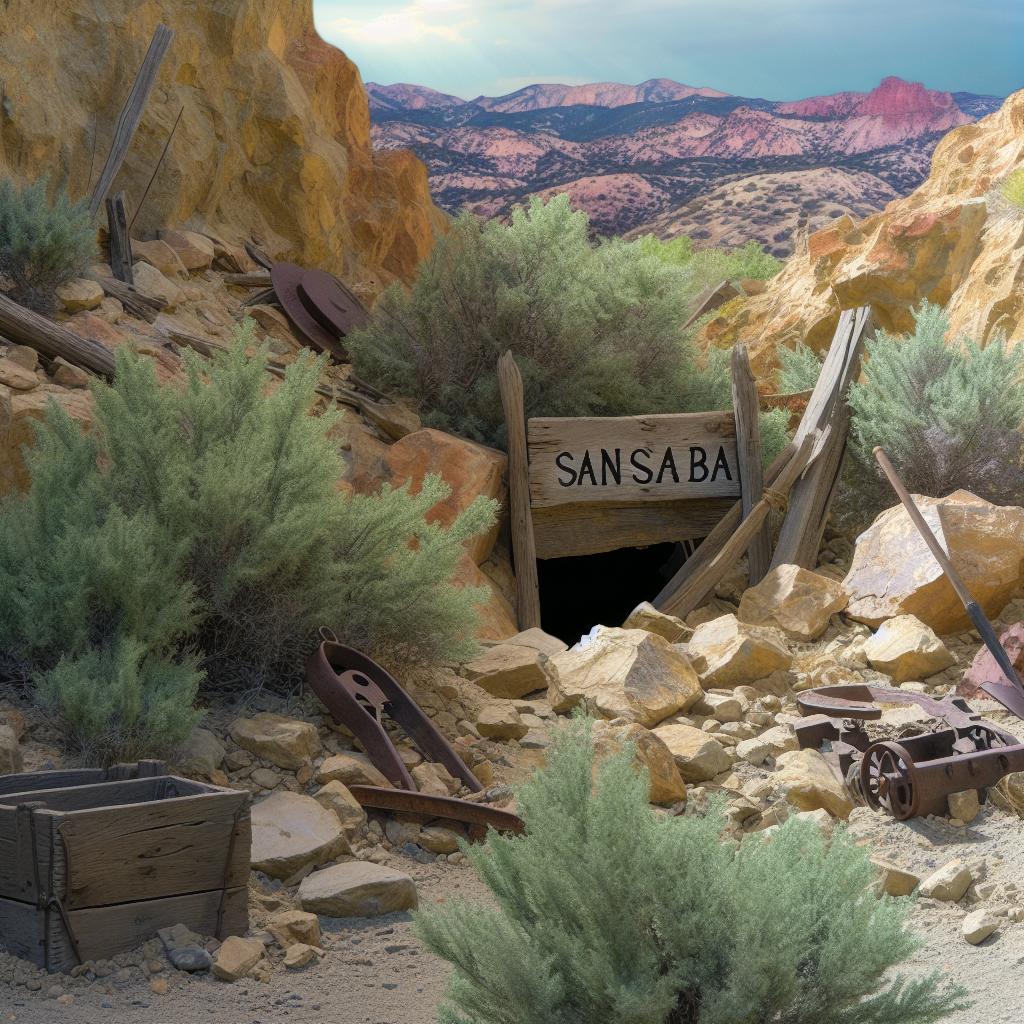The Origins of the San Saba Lost Silver Mine Legend
The legend of the San Saba Lost Silver Mine is a fascinating tale that dates back to the mid-18th century in what is present-day Texas. According to historical records, this supposed mine was believed to be located near the San Saba River. The story involves Spanish explorers and missionaries who were in search of mighty mineral wealth. This story is deeply embedded in Texan folklore and history, capturing the imaginations of many who have heard it.
Spanish Exploration and Missionary Work
By the 1750s, the Spanish were vigorously exploring the areas now known as Texas, driven by a dual mission: spreading Christianity and seeking economic opportunities. Figures such as Fray Manuel de Santa Ana and Colonel Diego Ortiz Parrilla played significant roles in establishing presidios and missions along the San Saba River. These missions were part of a broader strategy of Spanish colonization, serving both religious and economic purposes.
The spiritual aim was to convert the native Apache population, integrating them into the Spanish colonial system through religion. This missionary work was seen as vital for not only spiritual conquest but also for maintaining Spanish control in hostile territories. The strategic establishment of these missions acted as both spiritual centers and fortifications against possible encroachments by rival European powers or local hostile tribes.
The Search for Silver
The second driving force behind Spanish exploration in the area was the persistent rumor of prosperous silver deposits. The prospect of discovering a silver mine generated significant interest and enthusiasm during this time. It was widely believed among the Spanish explorers that the region held tremendous untapped mineral wealth, sparked by enticing stories emanating from Native American tribes.
Reports and communications from the period exhibit more than a hint of excitement over potential silver strikes. These rumors were powerful motivators in the allocation of Spanish resources, with expeditions dispatched in hopes of discovering precious metal that could fund Spanish imperial endeavors across the New World. The belief in silver reserves helped justify the military and missionary expenditure in this rugged and challenging terrain.
The Myth and the Mine
Despite numerous attempts and considerable dedication, the Spanish envoys failed to locate the silver mine, and its existence rapidly transformed from prospective reality to enduring legend. The persistent rumors and reports from the era began fading into the realm of myth and conjecture. Several theories exist as to why these efforts bore no fruit. Some historians speculate that exaggerations and misunderstandings surrounding local geology may have ignited the legend.
There is also compelling speculation that the tale of a hidden treasure trove was intentionally fabricated by the Spanish colonial authorities. By spreading such a narrative, they could sustain interest and financial support for the ongoing colonization efforts in the region, which would otherwise be seen as financially burdensome lacking the lure of great wealth. Whether the mine was real or an elaborate story, its recurring mention helped maintain focus on Texan territories, keeping them within the sphere of Spanish influence.
Historical and Cultural Impact
Throughout the centuries, the San Saba Lost Silver Mine legend has left a significant imprint on culture and history, particularly in Texas. This legend has spurred treasure hunters and adventurers, hoping to uncover the mythical riches. It has since entrenched itself in local folklore, becoming an essential part of Texan cultural narratives. The mystery and allure associated with the mine spill into local tales, contributing to regional identity and historical storytelling.
Modern expeditions continue in the hopes of finding the elusive mine. Innovators and enthusiasts have utilized advanced technology to trace its location, but tangible evidence of the mine remains elusive. As much as it stands as a testament to the adventurous spirit and the allure of treasure, it is equally instructional of the broader themes of hope, ambition, and human imagination that characterized early colonial endeavors.
Furthermore, examining the legend allows for deeper insight into the historical period of European colonization in the Americas. It illuminates the complex interactions between the explorers and indigenous populations, as well as the economic pressures faced by colonial powers. Although the existence of the mine remains unverified, understanding its legend offers valuable perspectives on how narratives of wealth and discovery frequently drove colonial expansion.
In sum, the tale of the San Saba Lost Silver Mine is more than a mere story of hidden treasure. It’s an integral piece of the broader narrative of exploration and colonization, simultaneously intriguing due to its mystery and illustrative of the powerful motivations that propelled European powers to delve into unknown lands in the hopes of unearthing wealth and expanding empire.


